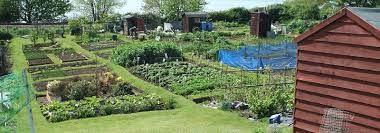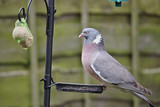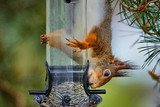How to welcome birds and wildlife to your allotment for a healthy crop

Birds and Wildlife in your allotment
Birds and wildlife in your allotment. From your salad crops that give you leaves for your meals, to your flowering peas, it’s National Allotment Week so take a step back and admire all your hard work. Farmers often see birds as pests but whether you’re starting a new allotment or have been the proud owner of an allotment for a number of years, you’ll want to attract these colourful characters to your allotment. Often a fraction of the cost of expensive pesticides and pest deterrents, attracting birds is not only a cheaper option but it will add birdsong and life to your allotment. Read on to discover our allotment tips for attracting birds to your allotment for a healthy year-round crop.Put a bird feeder on your allotment
A way to a bird’s heart is through its beak. Acting as a natural deterrent and preventing pests on your crops, birds eat insects such as slugs, greenflies, and blackflies, all helping your crops to flourish. Insects will naturally be drawn to your allotment, which will attract the birds, but by providing a good food supply with bird feeders, you will ensure that the birds stay there as a deterrent. Once you’ve chosen the type of bird you’d like to attract with your bird feeder, make sure to keep it clean and refilled on a regular basis.Introduce specific plants for birds
Plant crops that flower late or early in the season, such as chives to encourage the presence of bees and butterflies in your allotment through spring, summer, and autumn. Any flowering plant will attract insects, which will, in turn, attract birds. However, you can add some colour to your allotment by growing plants which provide food for birds to eat, such as seeds and berries. One of our favourite flowers to plant are sunflowers, as they attract bullfinches with an extra supply of sunflower seeds and a variety of birds that love to feed on the seed heads in the autumn. You can also plant a tangle of brambles in your allotment to make a favourable nesting site for birds like robins, wrens, song thrushes and blackbirds.Install a bird box on your allotment
No allotment is complete without a bird box. Providing birds the shelter they need from predators such as cats, will increase the attractiveness of your allotment to birds. Smaller bird boxes with holes are perfect for attracting tits and sparrows, while open-fronted boxes will attract robins, wagtails and spotted flycatchers. Make sure to feed birds throughout the winter and supply nesting boxes for your bird visitors.Stand out from the rest with a bird bath
One of our favourite allotment design ideas is installing a bird bath. Not only does this help make your allotment stand out from the rest but it also attracts a large number of birds. It’s also important to provide the birds with a good source of water if you’ve got a bird feeder or are offering them any type of wild bird food. If you’re thinking of getting a birdbath, you’ll need to keep it fresh, clean and topped up. This may sound like a lot of work on top of keeping your crops healthy, but it will add an extra level of tranquillity for those moments when you’re taking a breather on your plot. Attracting birds to your allotment is not only a great way to keep your crops healthy, but it will add new life and vibrancy to your plot. With all those colourful bird visitors, check out our BirdSpotter tool, which is a great way to record your bird sightings and contribute to your local bird conservation.7th Sep 2018
Explore Popular Articles
-
8 Easy Ways to Attract Woodpeckers to Your Garden
8th Apr 2024Woodpeckers are among the most interesting birds known for their drumming sound and bright colours.
-
How to Protect Your Bird Feeders from Pigeons ?
28th Mar 2024You must have noticed damaged feeding ports, hanging mechanisms, perches, lids and bottoms. Who coul
-
5 Foolproof Ways to Rat-Proof Your Bird Feeder
18th Mar 2024Building a bird-friendly environment is a delightful endeavour, but it involves the responsibility o




